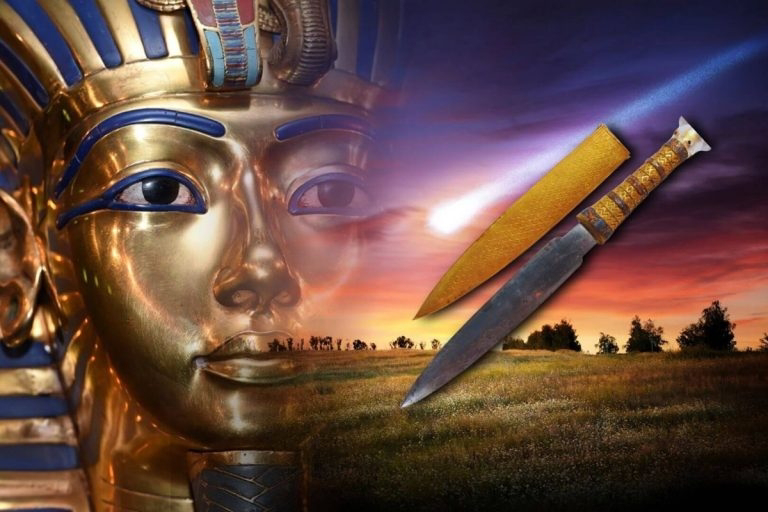In a tale that sounds plucked from myth but is firmly grounded in science, a dagger buried with the young Egyptian pharaoh Tutankhamun has ignited intrigue across the archaeological world.
The blade, which has mystified historians since its discovery in 1925, was recently revealed to be forged from meteoritic iron—an extraterrestrial material that arrived on Earth from space.
Even more astonishing is the theory emerging from recent studies: the dagger may have been a wedding gift, making it a celestial token of union as well as a technological marvel far ahead of its time.
Tutankhamun, who ascended to the throne at just nine years old and died mysteriously before reaching adulthood, was buried with an opulent array of treasures. Among these was a uniquely preserved dagger, tucked alongside his right thigh.
For decades, scholars noted its unusual quality: an iron blade polished to a sheen, complete with a gold handle and finely worked pommel. The riddle, however, lay in the iron itself. Ancient Egypt was still in the Bronze Age at the time, and iron was virtually unknown, let alone refined to this level.
Advancements in non-invasive scanning and spectroscopy finally provided answers. Scientists determined that the iron in the blade contains high levels of nickel and cobalt—characteristics consistent with iron meteorites. The conclusion? The dagger was literally forged from a fallen star.
This revelation upends conventional assumptions about the limits of ancient metallurgy.
While meteorites were occasionally collected and admired in ancient cultures, shaping one into a weapon of this caliber required both sophisticated skill and symbolic meaning. It wasn’t just a marvel of engineering—it was a message.
Some researchers suggest the dagger may have been a diplomatic or matrimonial gift, possibly from Mitanni royalty, as part of a marriage alliance with Egypt.
These foreign rulers had access to rare materials and could have presented the weapon as an extraordinary gesture of peace and union. If true, it would cast the blade not just as a curiosity, but as a powerful symbol of political strategy and celestial favor.
What makes the story even more compelling is the belief that the ancient Egyptians may have recognized the blade’s heavenly origin. In their cosmology, celestial events were deeply significant; a dagger made from “iron of the sky” would have been seen not just as a luxury item, but as a sacred object, perhaps even imbued with divine protection.
Today, Tutankhamun’s meteoritic dagger remains one of the most mysterious artifacts from ancient times—a relic that challenges our understanding of Egyptian craftsmanship, trade networks, and spiritual beliefs.
As tools grow sharper and science dives deeper, the blade continues to whisper secrets from the stars, reminding us that history is always more layered than it seems—sometimes forged in fire, sometimes fallen from the heavens.














.jpg)
.jpg)




0 Comments